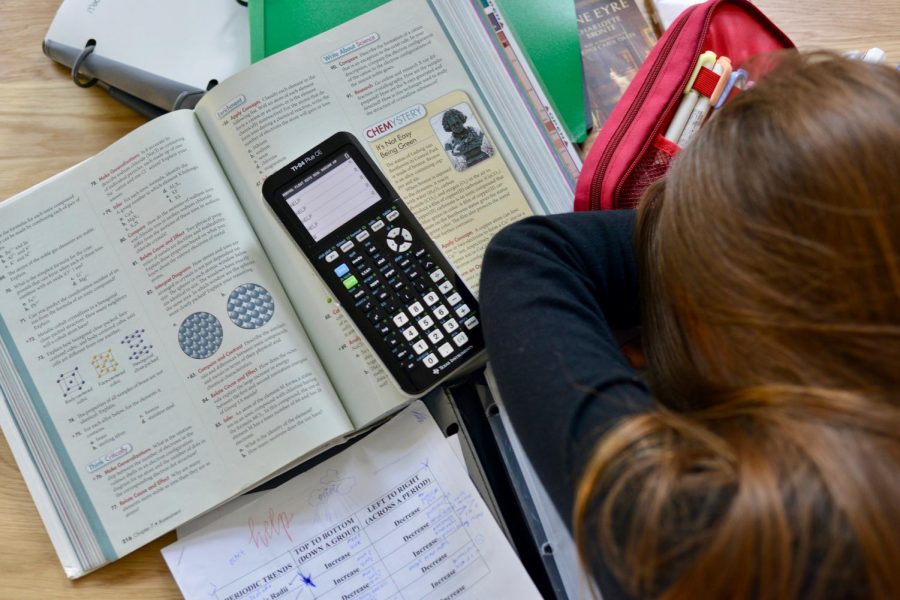Why Teens Should Hit “Snooze”
It’s time for schools to respond to the adolescent sleep deprivation epidemic.
Photo Courtesy of: Elinor Dana
girl sleeping doing homework
At 6:00 a.m, most teens are stirred awake by the ring of their alarm clock, opening their eyes to feelings of dread and exhaustion. Here awaits a new day of heavy eyelids, brain fog, and late-night studying to top it off. Each hour of the night allotted to homework rather than sleep racks up the hours to be repaid over the weekend—yet most schools continue to contribute to their students’ sleep debt.
According to a 2006 study by the National Sleep Foundation, “more than 87 percent of high school students” are sleeping under the recommended eight to ten hours. Ten to fifteen years later, as schools repeatedly fail to acknowledge scientific data and the complaints of their students, the American Academy of Pediatrics labels teen sleep deprivation an epidemic (Richter). And rightfully so; the disregard of an extra couple of hours poses grave health complications affecting both physical and mental well being.
The majority of teens are at risk of mood swings, anxiety, irritability, impulsivity, and poor concentration and cognitive functioning (Dimitriu), hence why academic performance and sleep go hand in hand. Forgoing a couple of hours to study, therefore, may actually do students a disservice, inhibiting their ability to think clearly and critically. The Harvard Division of Sleep Medicine additionally links a lack of sleep to obesity and cardiovascular issues, long-term implications arguably more critical than a missing assignment (“Consequences of Inefficient Sleep”).
The school day ends around 3:00 to 4:00, allowing six or so hours for homework, mealtime, hobbies, rest, and extracurricular activities in order to squeeze in the minimum of eight resting hours. It is simply unreasonable to expect teens to sleep for an adequate amount of time under such demands. Advanced Placement students, athletes, or actors especially are forced to compromise their schedule and, not surprisingly, pass up their sleep.
Moreover, the root of the issue lies not only in students’ limited after-school time but also in the interruption of their bodily slumber cycle. Sleep researchers have identified a shift in adolescents’ circadian rhythm, or their “internal biological clock” responsible for signaling sleep times. The delayed production of melatonin results in a sleep-wake cycle later than that of their parents or teachers, communicating tiredness around 11:00 p.m. and waking students between 8:00 and 9:00 in the morning (“Teens and Sleep”).
University of Washington biology professor Horacio de la Iglesia therefore asserts that “to ask a teen to be up and alert at 7:30 a.m. is like asking an adult to be active and alert at 5:30 a.m.” (qtd. in Urton).
So why are students roaming the hallways as early as 7:30? The current scientific data contradicts justifications for early start times. In fact, the American Academy of Pediatrics suggests delaying the beginning of school until 8:30 at the earliest to optimize students’ mental and physical health (“Schools Start Too Early”).
And no, the majority of teens will not consider this an opportunity to stay up later. A study monitoring the sleep of Seattle high school students after shifting the start of the day from 7:30 to 8:45 found a “significant improvement in the sleep duration of students” (Urton). They simply used the extra time to sleep in—to listen to their biological impulses.
As sleep affects multiple areas of students’ health and functioning, the benefits additionally extend to academic life. The Seattle high schools noted an increase in final exam scores, as well as a decrease in tardies and absences (Urton).
For the sake of the well-being and performance of our students, beginning and ending the day an hour later seems more than worthwhile. So hit the snooze button, students, teachers, and administrators—sleep is a necessity, not a privilege.






